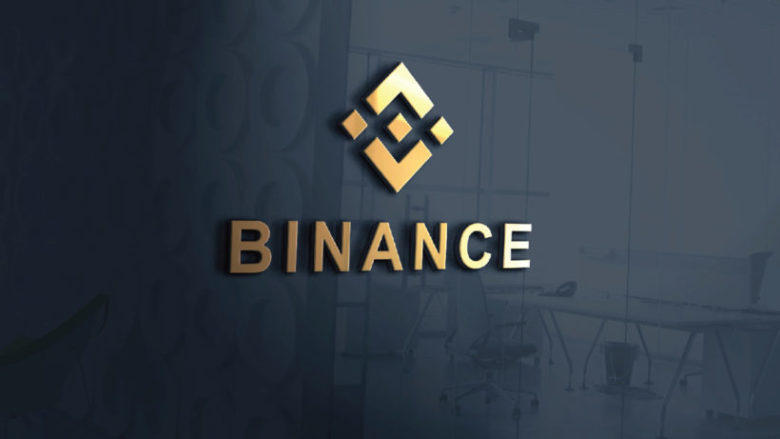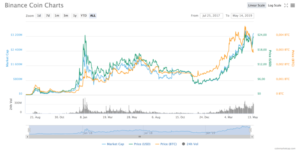Binance Coin: The Crypto Token and the Exchange Behind It

The crypto market is growing again and there is a new player in the top 10 market capitalization crypto assets: the Binance Coin (BNB). Behind this is Binance, an exchange that has evolved into one of the world’s largest trading centers for bitcoin since its start in2017.
With the in-house crypto asset Binance Coin (BNB), the company around CEO Changpeng Zhao has a utility token, which, in contrast to many others, actually has a practical use. Among other things, it serves to pay the fees incurred on the platform when trading with cryptocurrencies. Currently, BNB has a market capitalization of more than $3B, larger than Stellar (XLM), Cardano (ADA) or Monero (XMR).
How did the Binance Coin arise?
Like many other startups, the Exchange Binance did an ICO in 2017, for which the initial 200M BNBs were created. Some 50% were sold to ICO investors, the team retained 40%, and the rest went to angel investors. Back then Binance raised the equivalent of around $ 15 million.
What should BNB be used for?
BNB is popular because basically two things can be done with it. On the one hand, BNB can be traded on various exchanges. Hodlers can store the tokens in specific wallets. On the other hand, BNB is really meant to pay for Binance’s trading fees, or to invest in so-called IEOs (Initial Exchange Offerings, see below).
Those who use BNB to pay trading fees at Binance, get a discount for it. Binance wants to reward those investors who initially bought BNB up to a certain point in time. You are however not obligated to pay the fees with BNB, you can also pay them in the currency in which you trade (BTC, ETH, etc.).
How do IEOs work with the Binance Coin?
Binance has launched its own crowd investing platform for crypto projects with the launchpad. In these Initial Exchange Offerings, Binance seeks to meet KYC and AML requirements and act as a platform that takes care of the potential investors to projects.
And: most of the projects that are looking for investors could only invest with BNB. So Binance tries to put together projects and users. The users have to buy BNB to get the new tokens of the projects, and the projects get BNB, with which they, in turn, pay the fees (eg for listing) on Binance. So far, projects and companies like Fetch.ai, BitTorrent, Celer or Matic IEOs have gone through the process.
It is questionable how long IEOs as a successor to the disputed ICOs could remain an exciting opportunity for projects. There is also a trend towards the Security Token Offering (STO). The point of the STO is that tokens represent shares or securities of companies – and they are strictly regulated. So far, In Binance or BNB have not entered this field.

How does BNB work technically?
Originally, the Binance Coin was an ERC20 token on the Ethereum Blockchain. But because Binance launched its own blockchain (consequently Binance Chain) in April 2019, BNB now runs as a so-called BEP-2 token on this new blockchain. Users who previously had BNB had to or have to exchange these tokens for the new tokens. To do this, one needs a new Binance Chain, that’s generated on getbinance.org.
Why are BNBs regularly destroyed?
Binance charges BNB for the fees users pay on the platform. In order to artificially increase the value of BNB, they have come up with a trick: Every quarter, a certain amount of BNB, which Binance receives from its customers, is destroyed. The amount of BNB being burned is always determined by the trading volume. The burning mechanism should last until there are only 100M BNBs left.
Thus Binance promises the following: Due to the artificial scarcity of the BNB, the value of the asset is supposed to rise steadily. So the vendors have found a way how they can distribute value to the token owners regularly.
How is BNB developing?
The development of BNB is remarkable. The market capitalization of the asset has never been so good as it’s now (mid-May 2019). Even during the hype in early 2018, BNB’s maximum market cap was just over $ 2 billion. Also, the price of a BNB has reached its tentative high (just over $ 25) just recently, and not last year, when all crypto assets were booming.

However, the success of BNB is strongly linked to the success of Binance itself. And the company has always had legal problems in the past, so it moved from China first to Japan and then to Malta, always looking for the best possible legal framework for their businesses.
This article is by no means a recommendation for the purchase of BNB.





























